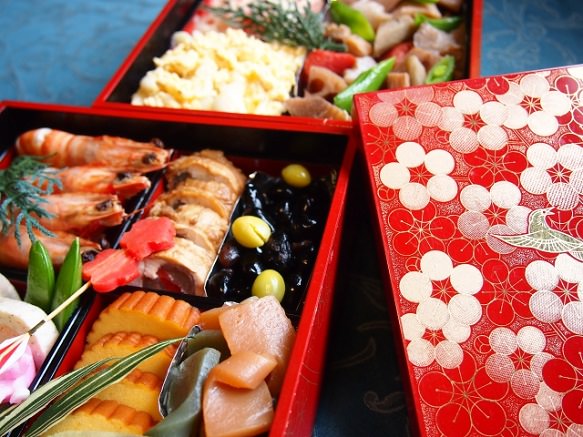-
- USA/Canada 1-800-285-2726
- Australia (02) 8006 4411

Osechi Ryori are traditional Japanese New Year's dishes served in jūbako ("special boxes"). Kaiseki is composed of a variety of dishes which are beautifully arranged in the jūbako. Osechi Ryori originally began as a meal to enjoy during the first few days of the New Year when stores were closed. The dishes in osechi are made from ingredients that don't spoil easily and can be left in the fridge or stored in a cool area for several days. Each dish in osechi ryori is meant to symbolize good fortune or prosperity. For example, Kuro-mame (black soybeans) are eaten because mame is another word for "health", symbolizing health for the new year. Tai (red sea-bream) is associated with the Japanese word omedetai or "congratulations", symbolizing good fortune. Most of the names in osechi ryori can be considered puns for good luck, like konbu which sounds like yorokobu, symbolizing happiness.
The tradition for making osechi ryori dates back to the early days of Japan, when it was considered taboo to cook during the first three days of the new year with a stove (ozoni soup is the only exception to the rule). To make up for that, mothers would prepare the osechi days in advanced for their families. This taboo to avoid cooking with fire is said to be why the Japanese eat toshi-koshi-soba before the old year ends. Toshi Koshi Soba literally translates to "year-crossing soba" and is a simple soba dish attributed to a long, healthy life. It's believed after spending the previous days preparing osechi, wives would serve toshi koshi soba as an easy meal to relax and enjoy the New Years with family rather than spending time cooking.
New Years is the most important holiday and tradition
Kaiseki Ryori is a traditional Japanese multi course meal consisting of small dishes
New Years Allowance
Lucky Bags with goodies sold during the New Years
There are many holidays in Japan celebrating the country's rich culture
Sashimi is sliced raw fish dipped in soy sauce with a bit of wasabi
Traditionally consists of seafood placed on top of a chunk of vinegared rice
A traditional vegetarian, gourmet food is called shojin-ryori in Japanese.